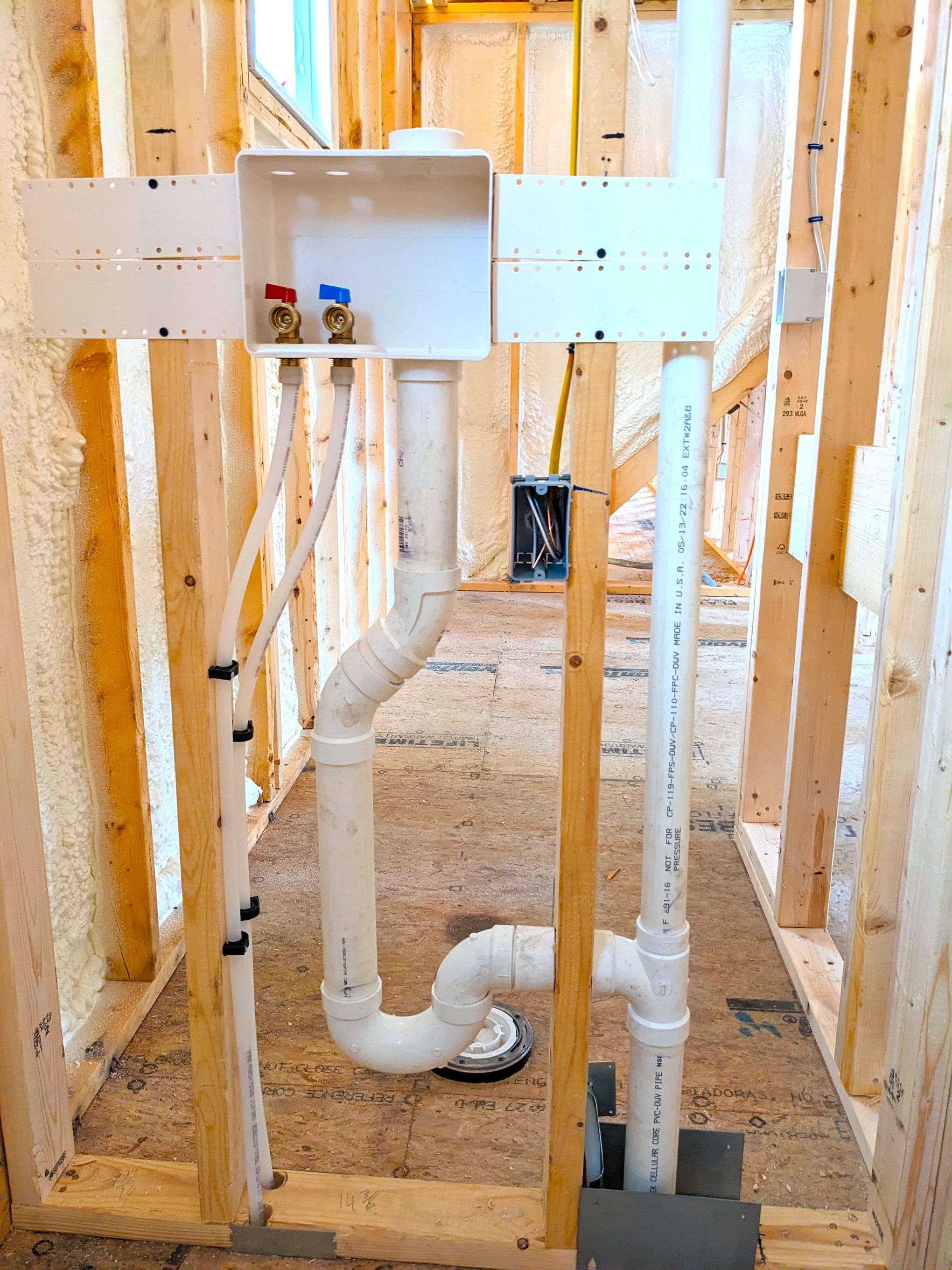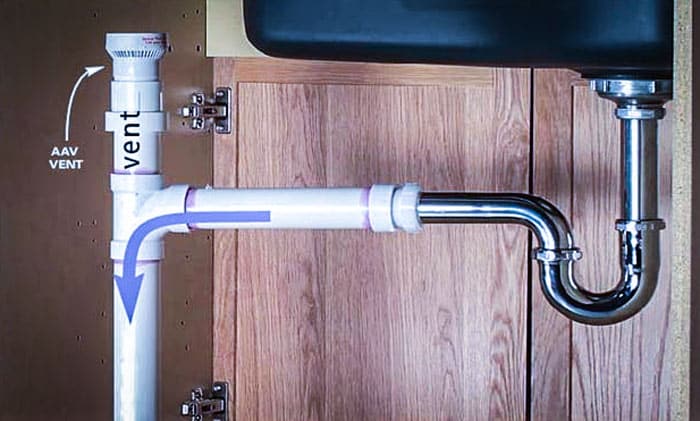Presented here below you can find additional good quality resources on the subject of What Is A Plumbing Vent & How Do They Work?.

Correct air flow in pipes systems is commonly overlooked, yet it is vital for maintaining the performance and security of your home's pipes. Ventilation helps control atmospheric pressure, avoid the accumulation of unsafe gases, and ensure the efficient removal of waste. In this guide, we will explore the value of correct pipes air flow, just how it functions, and the benefits it offers your pipes system.
How Ventilation Works in Pipes Solutions
Atmospheric Pressure Regulation
Proper ventilation keeps well balanced atmospheric pressure within the plumbing system. When water moves through pipes, it displaces air. Without adequate ventilation, this variation can develop negative pressure, bring about slow drains or siphoning of water from traps, which can trigger undesirable smells to leak into the home.
Avoiding Sewage System Gas Accumulation
One of one of the most vital functions of pipes vents is to prevent drain gases, such as methane and hydrogen sulfide, from building up within the home. These gases can position significant health dangers and are highly combustible. Vent pipes enable these gases to leave safely outside.
Aiding in Waste Removal
Air flow assists in the effective elimination of wastewater by protecting against airlocks in the water drainage system. When air can stream openly through the vents, it permits water and waste to stream efficiently with the pipes, lowering the danger of obstructions and backups.
Advantages of Appropriate Air Flow
Enhanced System Performance
Appropriately aerated plumbing systems run more effectively, with less clogs, faster draining, and much less stress on the pipes. This efficiency expands the life-span of the pipes system.
Improved Air Top Quality
By stopping drain gases from entering your home, proper air flow adds to better interior air high quality, making your living environment healthier and extra comfy.
Stopping Water Damage
Ample ventilation helps protect against water from being siphoned out of traps, which can bring about sewer gases going into the home and causing water damage gradually.
Actions to Ensure Appropriate Air Flow
Consulting Plumbing Codes
Constantly speak with local pipes codes when creating or modifying your pipes system. These codes offer the necessary standards for proper airing vent and guarantee your system satisfies safety and security requirements.
Normal Assessment and Upkeep
Regular evaluations can assist determine prospective ventilation issues prior to they come to be significant issues. Maintenance jobs, such as cleansing air vent pipelines and looking for obstructions, are necessary for maintaining the system in good working order.
Expert Setup
For new installments or major alterations, it's wise to hire an expert plumbing. They have the proficiency to make sure the air flow system is properly made and set up according to code.
Recognizing Air Flow in Pipes
Air flow in pipes refers to the network of pipes that permit air to flow with the drainage system. These vents serve numerous objectives, including controling atmospheric pressure within the pipes, stopping sewage system gases from getting in the home, and aiding in the smooth flow of wastewater.
Kinds Of Plumbing Vents
Main Stack Vent
The primary pile air vent, also known as the vent pile, is the key vent in a plumbing system. It prolongs from the primary drainpipe align via the roof, allowing gases to leave and fresh air to go into the system.
Branch Vent
Branch vents attach to the major pile air vent and offer private fixtures, such as sinks, commodes, and showers. These vents guarantee that each fixture has appropriate ventilation to operate properly.
Air Admission Shutoff (AAV).
An Air Admission Shutoff (AAV) is a one-way shutoff that permits air to enter the plumbing system without the need for a traditional vent pipe prolonging through the roof. AAVs are commonly made use of in improvements or locations where setting up a basic air vent is unwise.
Signs of Poor Air Flow in Plumbing.
Slow Draining Fixtures.
If your sinks, bathtubs, or toilets are draining pipes slowly, maybe a sign of bad air flow. Insufficient air flow can produce a vacuum cleaner result, making it difficult for water to drain correctly.
Gurgling Seems.
Gurgling noises originating from drains are typically an outcome of air being sucked with water catches because of negative pressure in the pipelines. This is a clear indicator of not enough air flow.
Undesirable Odors.
Sewage system odors inside your home are a warning that your plumbing system is not correctly aerated. This can suggest that sewage system gases are not being adequately aired vent outside, causing potentially unsafe problems.
Common Air Flow Errors.
Inadequate Vent Sizing.
Making use of undersized air vent pipes can bring about bad air circulation and pressure inequalities in the system. It's necessary to make use of vents that satisfy the details requirements of your pipes system.
Improper Vent Positioning.
Placing vents also much from the fixtures they offer can minimize their effectiveness. Correct placement ensures that air can move freely and successfully with the system.
Disregarding Code Demands.
Building codes supply specific standards for pipes air flow. Neglecting these codes can result in a system that stops working to function properly and may lead to costly repair services or health hazards.
Verdict.
Appropriate ventilation is a critical component of any type of pipes system, making certain that it operates effectively and safely. By comprehending the significance of ventilation, identifying the indicators of bad ventilation, and taking actions to preserve your system, you can stop costly concerns and secure your home's air high quality.
4 Things You Should Know About Your Plumbing Vents
What Plumbing Vents Are
Also called a vent stack, a plumbing vent is a vertical pipe attached to your drain line that runs through your roof. The plumbing vent pipe, or plumbing air vent, removes gas and odors from your plumbing system and allows fresh air to enter the pipes, helping the water to flow out of the drain pipes.
What Plumbing Vents Do
Plumbing vents have two basic functions. One of which is to allow unpleasant smelling wastewater and sewer gasses to escape your plumbing system instead of entering your home. Plumbing vent pipes are typically located on roofs, away from windows, to ensure the fumes exit the home completely.
The other function of the plumbing vent is to move fresh air into your plumbing system. This helps move water through every plumbing fixture in your house, like toilets and sink drains. Think of the way in which you need to let a little air into the bottle as you pour soda in order to make the drink flow smoothly.
Different Types of Plumbing Vents
True vent: This is the most common vent option. In simplest terms, a true vent is a vertical pipe attached to your drain line that exits through the roof. They often function as the main vent that other fixtures can connect to. Re-vent pipe or auxiliary vent: Attached to the drain line near specific plumbing fixtures, re-vent pipes run up and over to connect to the main vent. Common vent: Two plumbing fixtures installed on opposite sides of a wall are typically tied into the vent stack using something known as a sanitary cross. Wet vent: This venting option operates as a drain pipe and a vent at the same time. Wet vent drainage systems drain water from one fixture while venting the air from another. Although they’ve been used for over 100 years, wet vent systems have only recently been added to the plumbing code in many areas. If you’re planning on installing one in a bathroom remodel, make sure you check your local code prior to construction. Loop vent: For free-standing fixtures like kitchen island sinks, loop vents are ideal. These vent pipes run under the floor, rise from the P-trap, and create a loop inside the cabinet sink. Air admittance valve: An AAV is a one-way mechanical valve typically installed at the site of the plumbing fixture. AAVs allow venting to occur without having to tie into a larger venting system. They’re ideal for venting fixtures where you aren’t able to easily connect to an existing vent system. Common Plumbing Vent Issues
Although vent pipes typically don’t have water flowing through them, they’re still subject to many typical plumbing issues. For example, clogs are one of the most common problems associated with sewer vent pipes. If your vent pipe gets clogged, all of your plumbing fixtures tied into the vent stack will be affected.
A sink with a slow drain that bubbles and gurgles or a strong sewage smell around your toilet are both indicators that your toilet vent pipe is clogged. Because most vent pipes exit through the roof, old leaves, twigs or even a bird’s nest could be clogging the pipe.
Clogs in your vent pipe system cause a buildup of negative pressure, meaning that water won’t be able to flow out of your home very well. It’s similar to putting your finger over the opening of a straw to trap water inside. When you remove your finger, the water is able to flow out of the straw.
If you suspect you have any blockage in your vent, make sure you have a professional come examine the situation. Left unchecked, a blocked air vent can lead to other costly repairs, like leaks and sediment buildup.
Under Pressure
Pipe vents are essential aspects of a home’s plumbing system. Owning a home means learning about all sorts of things you never put much thought into before. But by understanding as much as you can about the important systems of your home, you can keep those budgets intact and those anxiety levels low.
https://www.homeserve.com/en-us/blog/home-improvement/plumbing-vents/

We are very taken with Essential Plumbing Vent Pipes: Understanding Their Role and I really hope you enjoyed our page. Do you know somebody else who is occupied with Why Plumbing Air Vents Are Important? Take a moment to share it. I praise you for being here. Don't hesitate to come visit our website back soon.
Visit My Site